Buy 2-Day-Rapid Response-Master the Critical Signs and Symptoms that Patients Provide – Rachel Cartwright-Vanzant Course at GBesy. We actively participate in Groupbuys and are committed to sharing knowledge with a wider audience. Rest assured, the quality of our courses matches that of the original sale page. If you prefer, you can also buy directly from the sale page at the full price (the SALEPAGE link is directly provided in the post).
Salepage link: At HERE. Archive:
$299.99 $69 – 2-Day-Rapid Response-Master the Critical Signs and Symptoms that Patients Provide – Rachel Cartwright-Vanzant
- Confidently identify the early warning signs of clinical deterioration
- The latest evidence to guide clinical management strategies
- Solutions to your biggest challenges documenting a patient crisis
- Secrets to early detection of change in patient condition
- Validate your interpretation of signs/symptoms and subsequent actions – using real patient crisis scenarios
- Bonus material: Rapid Response Quick Reference Cards
You walk into your patient’s room. There is a sick feeling that something just isn’t right. Do you dismiss this internal radar? OR… do you listen to your intuition and begin investigating? Recognizing early signs and symptoms of something going wrong is your best defense legally and your best response clinically to prevent a poor outcome for your patient. The better you understand how and why the body responds to “things not working right”, the earlier you can take the steps to intervene and possibly prevent the progression leading to an unfavorable outcome that may include death. Yes! Patients have died because of failure to rescue when the signs and symptoms were clear in the medical record.
This two-day intensive educational event will provide numerous clinical situations that represent all body systems that can and have led to poor outcomes because the signs and symptoms either were not recognized or were not treated appropriately. You will also learn from an expert in documentation how to chart when something goes wrong with your patient. Documentation is just as important as the care you provide and you will learn how to do just that as well.
- Point out critical anatomy, physiology, and pathophysiology concerns of nine body systems that could present a patient crisis.
- Specify differentials for selected clinical crises.
- Decide at least 5 actions that improve patient outcome if initiated early.
- Analyze real patient crises to identify early signs of clinical deterioration.
- Integrate labs, radiology, medications and other findings into your plan of care for a patient in crisis.
- Select indicators for the implementation of the Rapid Response System.
- Explain steps to follow to determine severity of patient condition and priority setting.
- Choose appropriate assessment parameters critical for accurate clinical diagnosis.
- Distinguish between a change in patient condition and a change in patient condition that warrants a rapid response team.
- Demonstrate key strategies to avoid future risk when documenting a patient crisis.
- Formulate personal solutions to your biggest documentation concerns.
- Integrate current evidence-based clinical management strategies for patient crisis.
- Plan for the most high-risk populations for in-patient emergencies.
Immunology/Hematology: DIC | HIT | Transfusion reactions
- Bleeding usually stops quickly. How do you know when to be concerned?
- Demystify the complex web of clotting
- Most transfusion reactions are minor.
- What if the reaction is immediate/major?
- Do you know what to do?
Cardiovascular: Pulse pressure | Recognition of valvular heart disease | Recognition of ACS | Complication of PCI | Hypertensive crisis | Acute vascular insufficiency | Cardiac trauma | Aneurysms
- Calculate pulse pressure in a case study
- Recognize audibly and identify anatomic locations for valvular dysfunction (sound examples)
- List key urgent steps to take when you recognize ACS
- My back hurts! My foot is numb! My chest hurts again!
- When is a BP “too” high? Every patient is different…
- Your MVA patient on a M/S floor may look OK on the outside – but inside can be another thing!
Endocrine: SIADH | DI | Ketoacidosis and HHS | Hypoglycemia
- Too much water, too little water. What does it all mean?
- Too much insulin, too little insulin. Can’t keep it straight?
Gastrointestinal: GI bleed | Acute pancreatitis | Liver failure and encephalopathy | Abdominal trauma | Bowel infarction, obstruction and perforation
- 5 tips to correctly identify significant nonspecific abdominal pain
- When confusion is not just getting old!
- All backed up and nowhere to go, can kill your patient. Don’t miss key findings that can save them
Behavioral / Psychosocial: Delirium | Dementia | Suicide | Substance withdrawal
- Nurses can affect the double “Ds”
- Would you recognize suicide intent in your patient?
- The substance your patient abuses affects the presenting symptoms of withdrawal
Neurology: Encephalopathy | Stroke | TBI | Skull fracture | Seizure | Meningitis
- 5 clues to encephalopathy
- Embolic vs. ischemic stroke
- When the brain swells, the skull leaves no room for guessing. Early s/s of neuro problems
- Seizures may come about suddenly – and sometimes they don’t stop
Renal: Acute renal failure | Life-threatening electrolyte imbalance
- What the kidneys do with all those electrolytes. Why it matters
Pulmonary: Perfusion | Acute respiratory failure | Status asthmaticus | Pulmonary embolism | Pneumonia | Aspiration | Pneumothorax | Hemothorax
- Early detection that enough oxygen is not getting to the blood stream
- Toxic substances interfering with oxygen exchange
- Rapid detection of a pneumothorax and hemothorax
Multisystem: Hypovolemic, Hemorrhagic, SIRS, Sepsis, and Septic shock | Anaphylactic shock
- 5 tips to recognizing s/s of early shock and possible etiologies
- Support failing compensatory mechanisms in a deteriorating patient
$299.99 $69 – 2-Day-Rapid Response-Master the Critical Signs and Symptoms that Patients Provide – Rachel Cartwright-Vanzant
Buy the 2-Day-Rapid Response-Master the Critical Signs and Symptoms that Patients Provide – Rachel Cartwright-Vanzant course at the best price at GBesy.. After your purchase, you will get access to the downloads page. You can download all the files associated in your order at here and we will also send a download notification email via your mail.
Unlock your full potential with 2-Day-Rapid Response-Master the Critical Signs and Symptoms that Patients Provide – Rachel Cartwright-Vanzant courses. our courses are designed to help you excel.
Why wait? Take the first step towards greatness by purchasing 2-Day-Rapid Response-Master the Critical Signs and Symptoms that Patients Provide – Rachel Cartwright-Vanzant courses today. We offer a seamless and secure purchasing experience, ensuring your peace of mind. With our trusted payment gateways, Stripe and PayPal, you can confidently complete your transaction knowing that your financial information is protected.
Stripe, known for its robust security measures, provides a safe and reliable payment process. With its encrypted technology, your sensitive data remains confidential throughout the transaction. Rest assured that your purchase is protected.
PayPal, a globally recognized payment platform, offers an additional layer of security. With its buyer protection program, you can feel confident in your purchase. PayPal ensures that your financial details are safeguarded, allowing you to focus on your learning journey.
Is it secure? to Use of?
- Your identity is completely confidential. We do not share your information with anyone. So it is absolutely safe to buy the 2-Day-Rapid Response-Master the Critical Signs and Symptoms that Patients Provide – Rachel Cartwright-Vanzant course.
- 100% Safe Checkout Privateness coverage
- Communication and encryption of sensitive knowledge
- All card numbers are encrypted using AES at relaxation-256 and transmitting card numbers runs in a separate internet hosting atmosphere, and doesn’t share or save any data.
How can this course be delivered?
- After your successful payment this “2-Day-Rapid Response-Master the Critical Signs and Symptoms that Patients Provide – Rachel Cartwright-Vanzant course”, Most of the products will come to you immediately. But for some products were posted for offer. Please wait for our response, it might take a few hours due to the time zone difference.
- If this happens, please wait. The technical department will process the link shortly after. You will receive notifications directly by e-mail. We appreciate your wait.
What Shipping Methods Are Available?
- You will receive a download link in the invoice or YOUR ACCOUNT.
- The course link always exists. use your account to login and download the 2-Day-Rapid Response-Master the Critical Signs and Symptoms that Patients Provide – Rachel Cartwright-Vanzant course whenever you need.
- You only need to visit a single link, and you can get all the 2-Day-Rapid Response-Master the Critical Signs and Symptoms that Patients Provide – Rachel Cartwright-Vanzant course content at once.
- You can do your learning online. You can be downloaded for better results and can study anywhere on any device. Make sure your system does not sleep during the download.
How Do I Track Order?
- We always notice the status of your order immediately after your payment. After 7 days if there is no download link, the system will automatically complete your money.
- We love to hear from you. Please don’t hesitate to email us with any comments, questions and suggestions.
![GBesy [GB] GBesy [GB]](https://www.gbesy.com/wp-content/uploads/2023/05/gbesy-Logo-full-100.png)

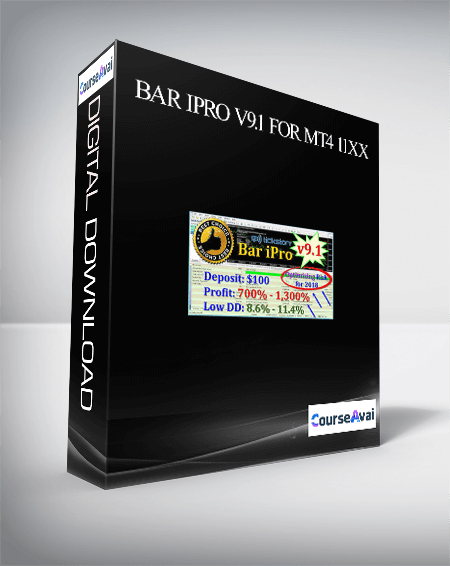

 Purchase this course you will earn
Purchase this course you will earn 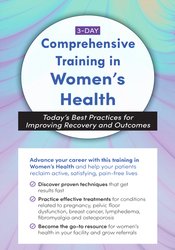
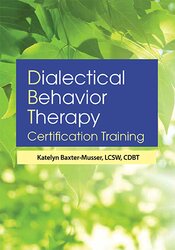
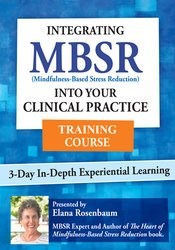
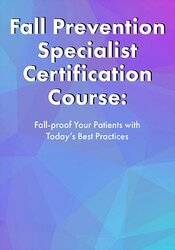
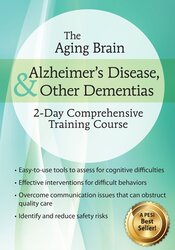
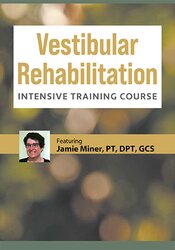
Reviews
There are no reviews yet.